



The SimVimX System is a flexible, powerful and easy-to-use Input/Output interface for home cockpit builders that makes it easy to create your own cockpit without spending a lot of money or time since no programming or electronics skills are required.
Only cheap, mainly ready to use electronics modules are used without need to order or make any complex PCBs. You don't even need to know X-Plane data structures and scripts, only a basic understanding of datarefs can be useful for custom I/O configurations.
The SimVimX Plugin for X-Plane, being the central part of the system, interacts with the master board firmware via the SimVimX data protocol, receives input data from the master board to run SimVimX functions, which can either simulate the device's pre-programmed logic or call X-Plane functions according to the stored configuration and conditions.
To output data, the plugin reads the simulator datarefs related to the user configuration, pre-processes them, converting to the format based on the output type, device type and conditions specified in the saved configuration, and sends the results to the master board.
The easy-to-use interactive I/O Configuration Tool built into the plugin 3.xx is used to design and configure cockpit I/O control hardware for the currently loaded aircraft. Image maps of various panel areas and entire panels make it quick and easily assign all the necessary I/O hardware, in addition to the ability to manually select any standard or custom datarefs/commands.
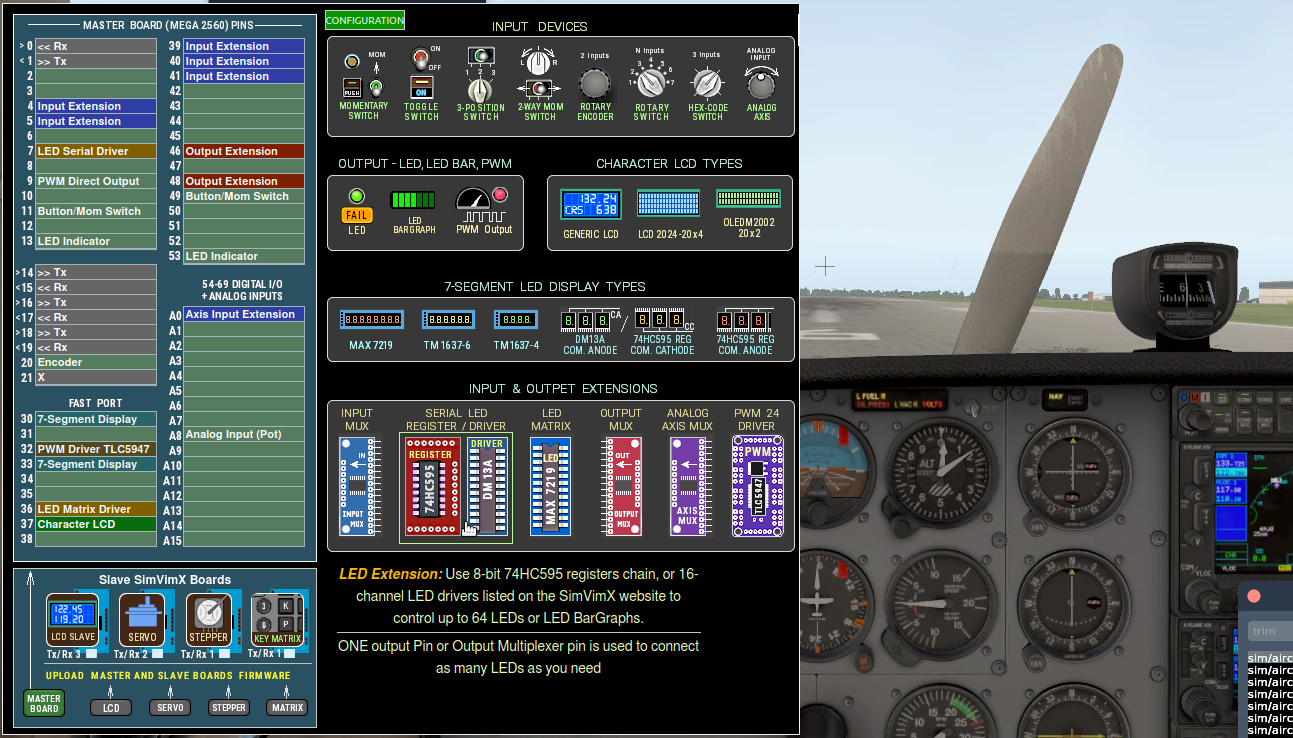
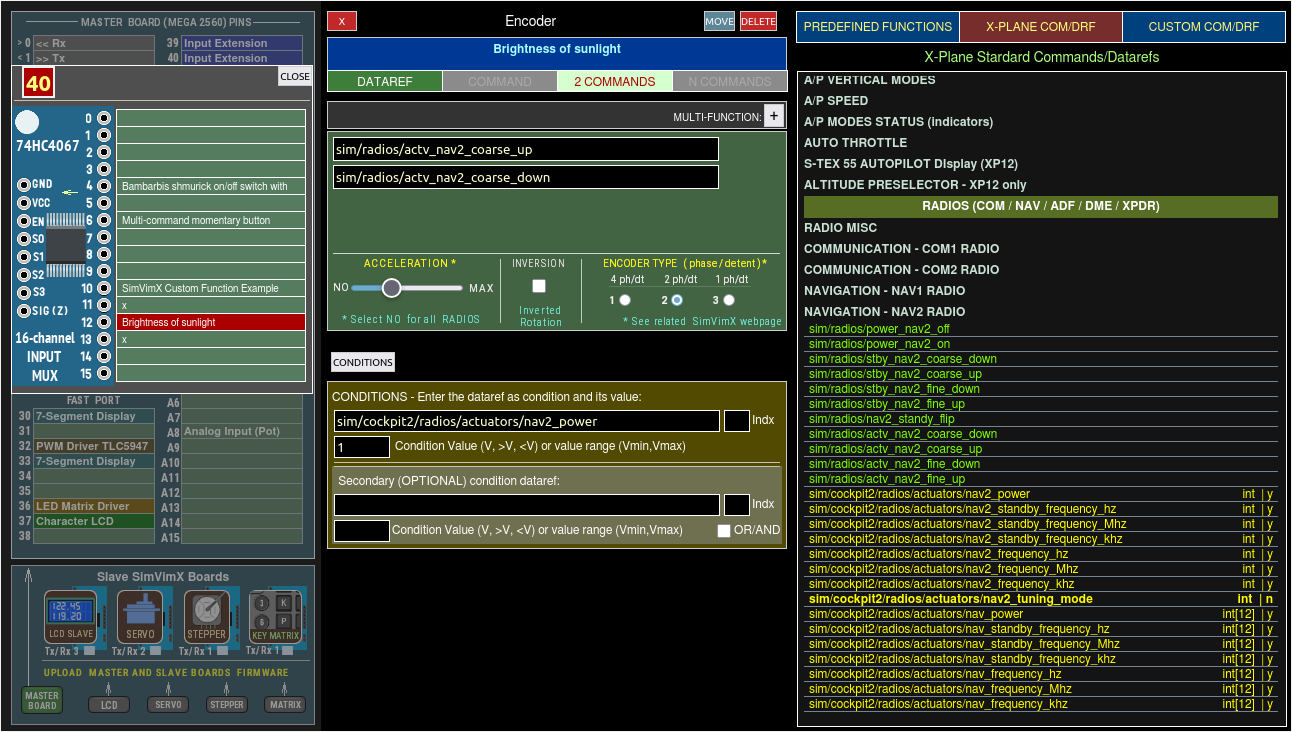
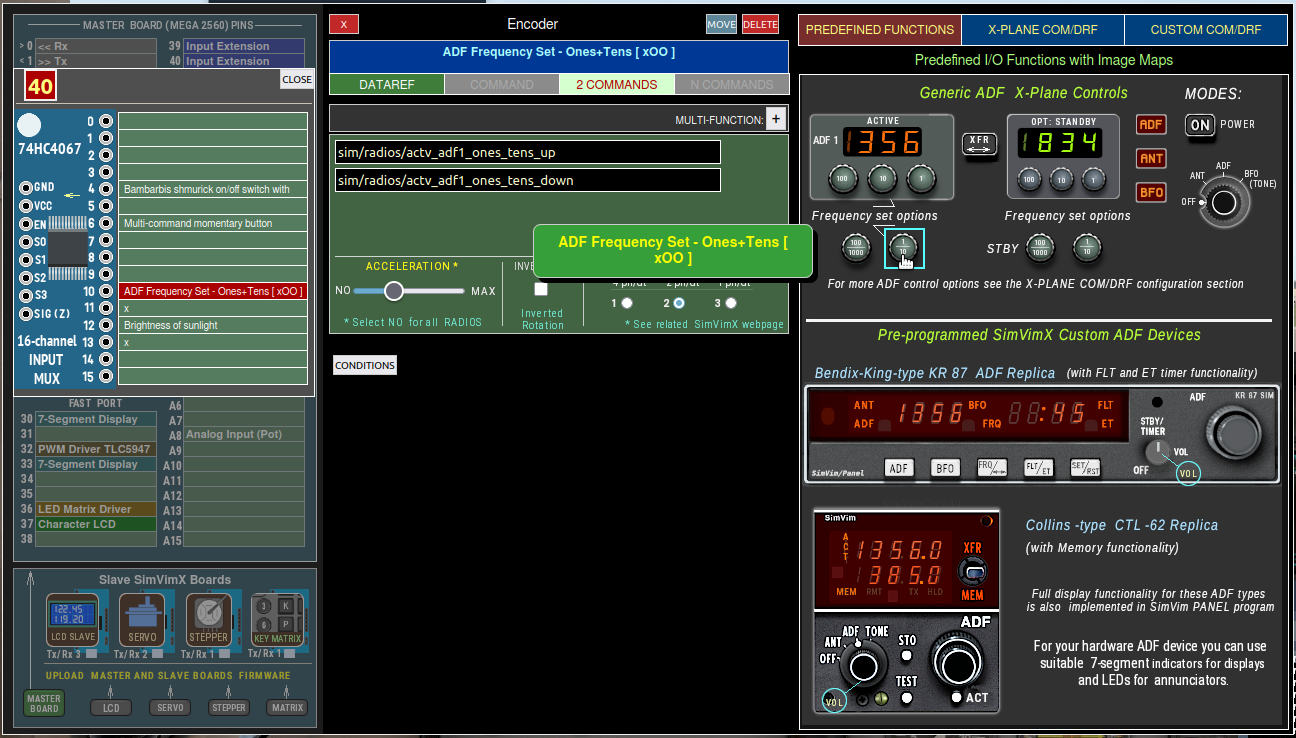
Also, SimVimX plugin communicates with SimVimPanel Software to display instrument panels on other computers. The plugin processes simulator data and sends the results to the panel program to display all instuments readings. It also receives input data from the on-screen SimVimPanel input zones to call X-Plane functions or SimVimX functions to simulate instruments logic.
The SimVimX firmware for Atmega 2560 controller (Arduino Mega) is a highly optimized program code, written from scratch, without using Arduino libraries, to handle a huge number of inputs, synchronize data control for a large number of different input/output devices, exchange data between plugin and slave boards. The firmware includes functions for massive inputs and it also is a kind of universal "driver" for all output devices.
Note: SimVimX System doesn't allow to use the controller board as a "usual" Arduino and users can not add any custom code, as there is no Arduino sketch, and the plugin uploads firmware directly to the board. At this moment the Atmega2560 is used as a convenient and easily available controller platform for SimVimX.
SimVimPanel is a standalone program for additional computers with a set of realistic, fully-functional aircraft instruments to be displayed on any computer (mini PC, Raspberry, laptop) that is connected by network to the main computer with X-Plane. The system is built in such a way that any number of computers with different instrument panels can be connected to the main computer running X-Plane. Once you download SimVimX plugin for X-Plane and run the SimVimPanel program on another computer in the local network, they will connect automatically.
The Panel Constructor built into the plugin 3.xx allows you to create your aircraft's instrument panel. You can select instruments from the SimVimX instrument list and arrange them in the desired order on the external computer screen, which is displayed in the constructor window.
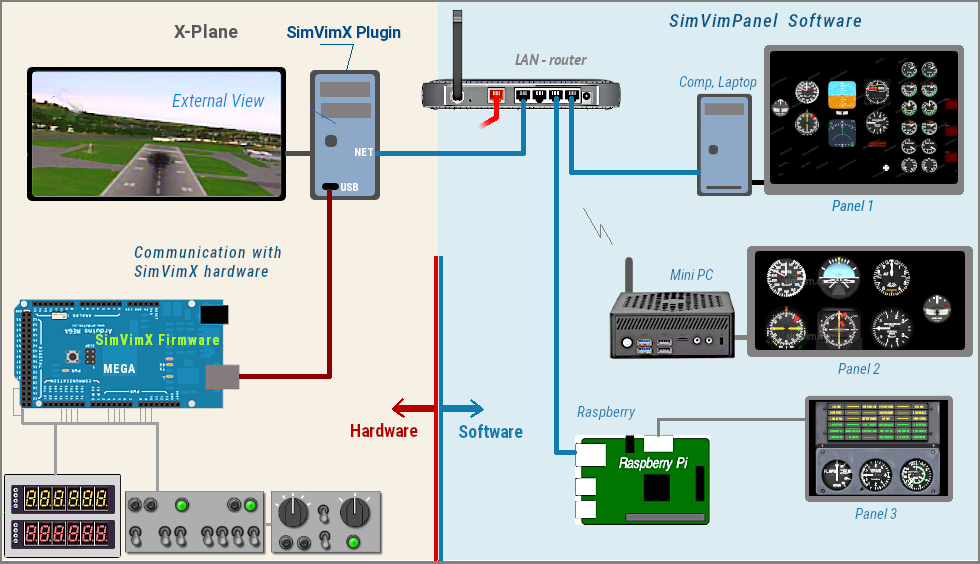
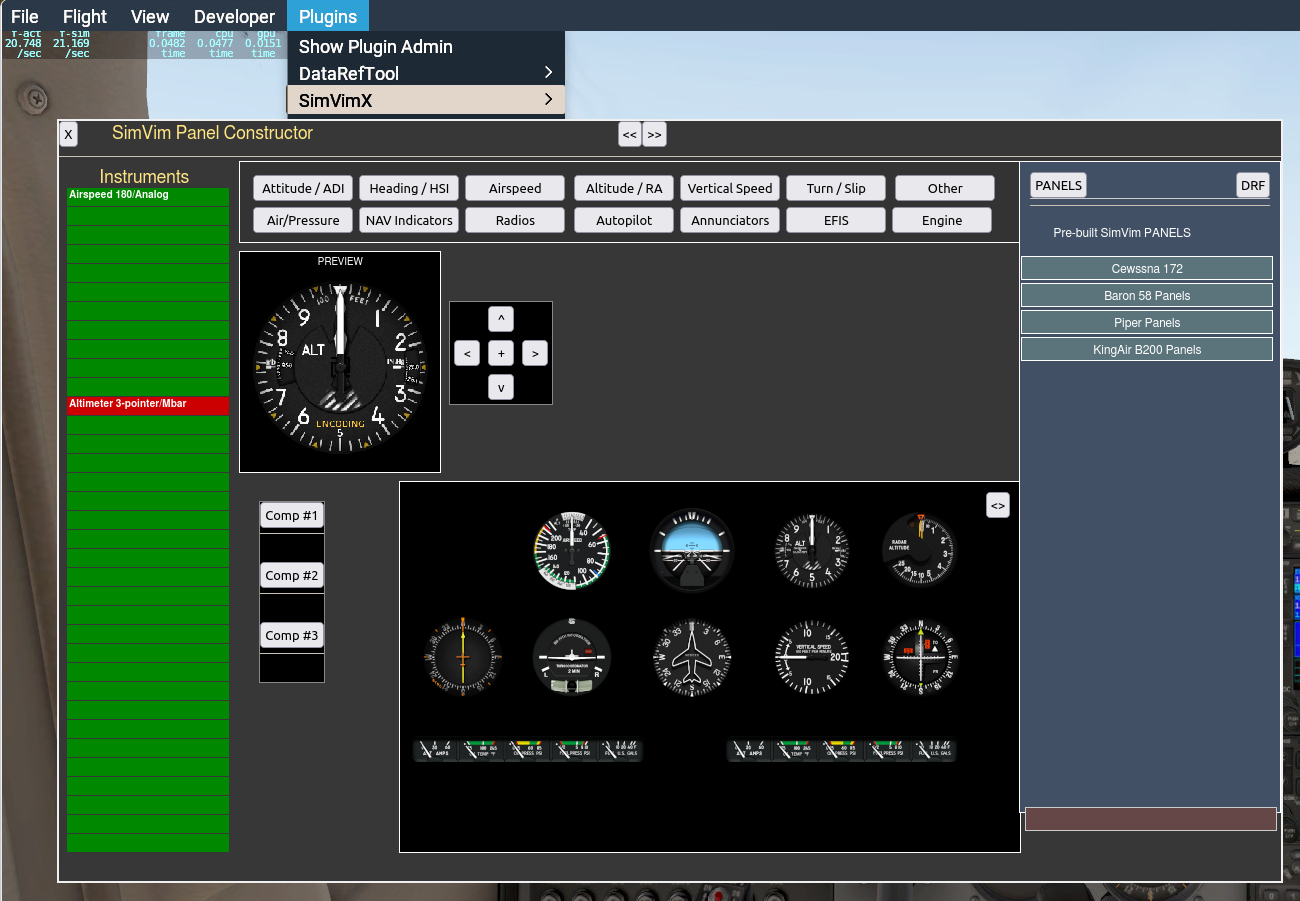
New SimVimX System v. 3.xx coming soon!
All configurations from previous version will be automatically converted in the SimVimX Plugin 3.xx interface.
The SimVimX project is under constant development, and its functionality may be improved and changed quite often during the development process.